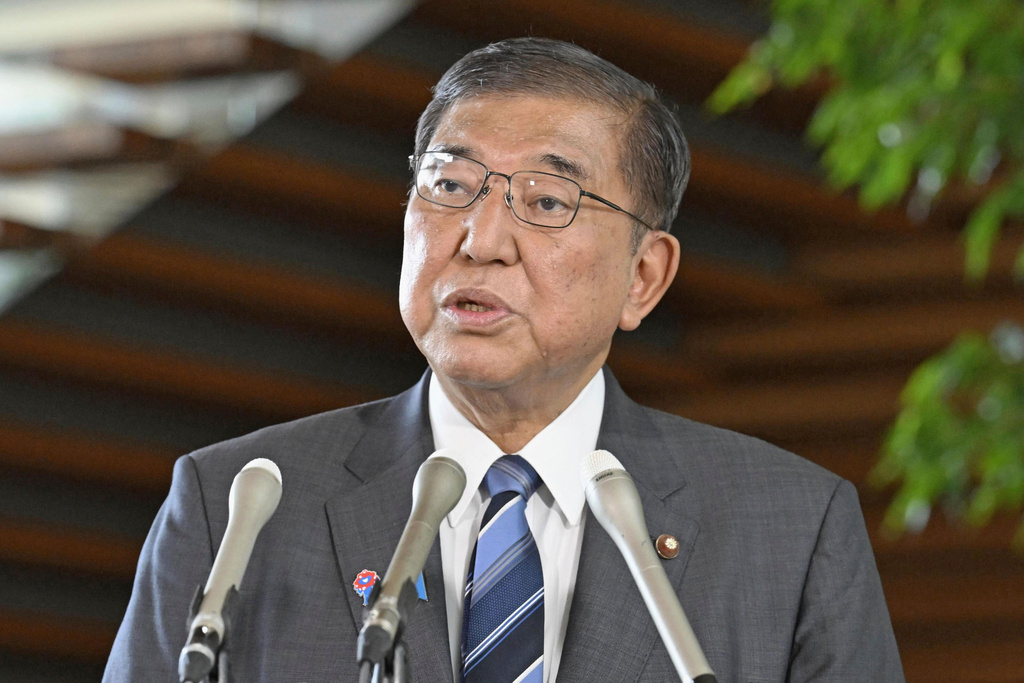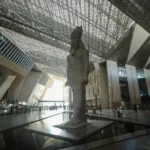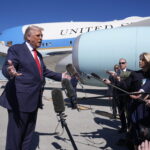Tsunami Warnings Issued After 8.8 Quake in Russia’s Far East \ Newslooks \ Washington DC \ Mary Sidiqi \ Evening Edition \ An 8.8-magnitude earthquake hit Russia’s Kamchatka Peninsula early Wednesday, generating tsunami warnings across the Pacific. Waves were observed in Japan, while coastal advisories stretched from Alaska to New Zealand. Authorities report structural damage and aftershocks, but no major injuries.

Quick Looks
- An 8.8-magnitude earthquake struck near Russia’s Kamchatka Peninsula early Wednesday.
- The quake triggered tsunami warnings from Alaska to New Zealand.
- Honolulu sirens sounded as residents moved to higher ground.
- A 40 cm tsunami was recorded on Hokkaido’s southern coast in Japan.
- Severo-Kurilsk in the Russian Kurils was hit by the first wave; residents were evacuated.
- Damage and power outages were reported in Petropavlovsk-Kamchatsky.
- The Pacific Tsunami Warning Center urged urgent protective action in Hawaii.
- Small tsunami waves reached the U.S. West Coast, prompting advisories in Oregon, California, and British Columbia.
- No serious injuries reported, but multiple aftershocks up to 6.9 magnitude followed.
- Japan’s nuclear plants reported no damage; 4,000 workers at Fukushima took shelter.
- New Zealand and the Philippines issued coastal warnings and urged people to avoid beaches.
- Strongest quake in the Kamchatka region since 1952’s 9.0-magnitude temblor.
Deep Look
8.8-Magnitude Earthquake Shakes Russia’s Far East, Tsunami Warnings Extend Across the Pacific
One of the strongest earthquakes in modern history struck Russia’s Kamchatka Peninsula early Wednesday, triggering a chain of tsunami warnings and alerts spanning the entire Pacific basin. The 8.8-magnitude earthquake, which hit just after 8:25 a.m. Japan time, caused initial waves to hit nearby coastlines and led to widespread precautionary evacuations from Alaska and Hawaii to New Zealand.
Widespread Pacific Tsunami Threat
The Pacific Tsunami Warning Center (PTWC) confirmed a tsunami had been generated. Sirens blared in Honolulu on Tuesday evening as locals moved inland to higher ground. Officials warned of wave impacts across all the Hawaiian Islands, with the first arriving around 7 p.m. local time.
In the United States, the Oregon Department of Emergency Management issued an advisory, warning of small tsunami waves between 1 to 3 feet (0.3 to 0.9 meters) reaching the coastline around 11:40 p.m., urging people to stay away from beaches and marinas.
The tsunami advisory zone covered much of the West Coast, including British Columbia, Washington, Oregon, and California. Officials emphasized that while not a major tsunami, dangerous currents and strong surges could pose life-threatening risks to swimmers and those near the water.
Earthquake Impact in Russia
The epicenter was located approximately 119 kilometers (74 miles) east-southeast of Petropavlovsk-Kamchatsky, a city of 180,000 people on the Kamchatka Peninsula. The U.S. Geological Survey (USGS) initially reported the quake at magnitude 8.0, later revising it to 8.8, with a depth of 20.7 kilometers (13 miles)—a shallow quake more likely to generate tsunami waves.
In Petropavlovsk-Kamchatsky, residents reported power outages, damaged buildings, and mobile phone service disruptions. Cars swayed on streets, and numerous aftershocks—some as strong as 6.9 magnitude—rattled the area. The Russian Health Ministry said several people sought medical care, but no serious injuries had been reported.
The coastal town of Severo-Kurilsk, part of Russia’s Kuril Islands, was the first hit by a tsunami wave. Governor Valery Limarenko confirmed that evacuations were conducted successfully and residents remained on high ground as a precaution.
The Geophysical Survey of the Russian Academy of Sciences stated this was the strongest quake to hit the region since 1952, and warned that aftershocks may continue for a month. Coastal access was temporarily restricted due to potential further wave activity.
Tsunami Observed in Japan, No Nuclear Impact
In Japan, a 40-centimeter (1.3 feet) tsunami was recorded in Tokachi, on Hokkaido’s southern coast. The Japan Meteorological Agency and the Tokyo Electric Power Company Holdings reported no abnormalities at nuclear facilities along the coast. At the Fukushima Daiichi nuclear plant, about 4,000 workers took shelter on higher ground while monitoring safety remotely.
Japan, located along the seismically volatile Ring of Fire, responded swiftly given its history with devastating tsunamis—particularly the March 2011 Tōhoku earthquake, a 9.0-magnitude event that caused catastrophic loss of life and a nuclear meltdown.
Regional Alerts: Philippines and New Zealand
In the Philippines, authorities warned that coastal provinces along the eastern seaboard could face waves of less than 1 meter (3 feet). The Philippine Institute of Volcanology and Seismology cautioned that even minor tsunami waves can pose risks to swimmers and beachgoers, especially if surges continue for hours.
New Zealand, located some 6,000 miles (9,600 kilometers) from the epicenter, issued nationwide warnings. The National Emergency Management Agency advised the public to stay clear of coastal waters due to the risk of strong, unusual currents and unpredictable surges along beaches, harbors, rivers, and estuaries.
Despite the vast distance, the Pacific-wide impact of the earthquake underscores how seismic activity in one region can ripple across thousands of miles, threatening vulnerable coastlines.
Historical Comparison and Outlook
This earthquake ranks among the most powerful globally since 2011, when a magnitude 9.0 quake devastated Japan. The last quake of this strength in Kamchatka was the 1952 magnitude 9.0 temblor, which sent 30-foot waves to Hawaii but caused no fatalities.
As emergency teams across the Pacific Rim remain on alert, seismologists continue monitoring for further seismic activity. Experts warn that while the main shock has passed, aftershocks and localized wave impacts remain possible for several days.
Tsunami Warnings Issued







